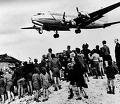Bill,
The Dora-13's excellent high alt performance was in great part due to the fact that it featured the GM-1 system.
The Ta-152H-0 entered service in October 1944, 20 being delivered between October and Novermber.
And as to other transport a/c, well the Ju-252 beats them all in terms of speed cargo capacity (Except the Me-323 which could carry 12+ tons of cargo).
The Dora-13's excellent high alt performance was in great part due to the fact that it featured the GM-1 system.
The Ta-152H-0 entered service in October 1944, 20 being delivered between October and Novermber.
And as to other transport a/c, well the Ju-252 beats them all in terms of speed cargo capacity (Except the Me-323 which could carry 12+ tons of cargo).

